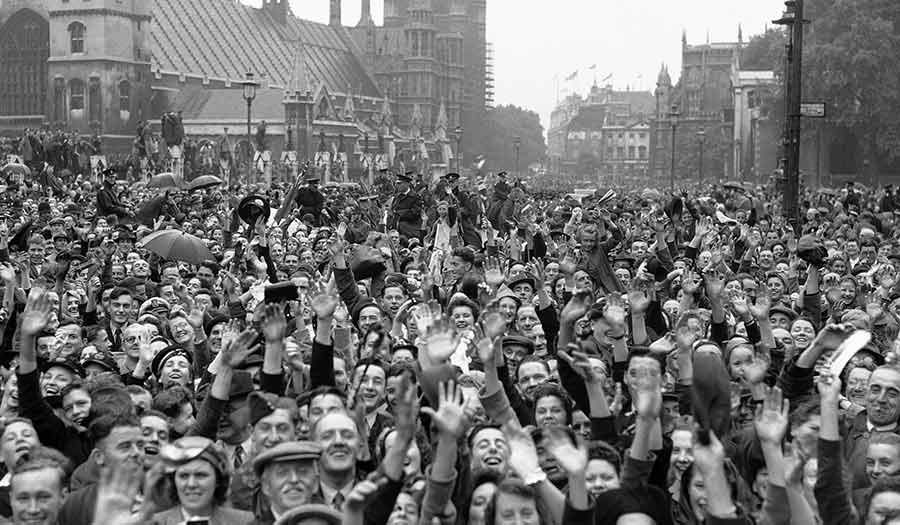 AP
AP
World News Desk
Learn the why behind the headlines.
Subscribe to the Real Truth for FREE news and analysis.
Subscribe NowLONDON (AP) – The long goodbye for Queen Elizabeth II is a reminder of a broader truth playing out with little fanfare across Britain: The nation is bidding farewell to the men and women who fought the country’s battles during World War II.
The queen, who served as a mechanic and truck driver in the last months of the war, was a tangible link to the sailors, soldiers, airmen, marines and others who signed up to do their bit in a conflict that killed 384,000 service personnel and 70,000 British civilians.
But like the queen, even the youngest veterans of the war are now nearing their 100th birthdays, and a steady stream of obituaries tells the story of a disappearing generation.
“It’s extraordinary how that sense of the passing of time is felt very keenly at the moment,” said Charles Byrne, director general of the Royal British Legion, the nation’s largest armed services charity.
“The queen was a personification of that generation…and with her passing, it just drives home the sense that time is moving relentlessly, as it does.”
That loss is, perhaps, felt more widely in the United Kingdom than a country like the United States, because the UK’s very existence was threatened during the war. Bombs fell on cities from London to Belfast, women were conscripted into war work and wartime rationing didn’t end until 1954.
Elizabeth, who famously saved ration coupons to make her wedding dress in 1947, led a ceremony of remembrance for all the nation’s fallen service personnel each year on the anniversary of the end of World War I.
“She is the epitome of that sense of service and stoic contribution,” Mr. Byrne said. “And that is treasured more than ever.”
British authorities don’t know exactly how many World War II veterans are left because the nation’s census takers didn’t track military service until last year. Those figures are due to be released next month.
The Royal Air Force says it knows of only one surviving Battle of Britain pilot, the men Winston Churchill immortalized as “the few” who helped turn the tide of the war. Group Captain John Hemingway celebrated his 103rd birthday in July.
But the number of survivors is dwindling.
Among those who died this year were Henriette Hanotte, who ferried downed Allied pilots across the French border as they made their way home. And Harry Billinge, who was just 18 when he joined the first wave of troops to land on Gold Beach in Normandy on D-Day, as well as Douglas Newham, who survived 60 bombing raids as a Royal Air Force navigator, but was haunted by those who didn’t return.
It was a time of shared sacrifice. Then Princess Elizabeth, like many teenagers, had to persuade her father to let her join the army in 1945.
When Elizabeth turned 18, King George VI exempted her from mandatory military service because he said her training as the heir to the throne took precedence over the wartime need for manpower.
But the princess, who began her war work at the age of 14 with a broadcast to displaced children and later tended a vegetable garden as part of the government’s “Dig for Victory” program, got her way.
She enlisted in the Auxiliary Territorial Service in February 1945 and trained to become a military truck driver and mechanic. The ATS was the largest of the auxiliary services deploying women to non-combat rolls such as clerks, drivers and dispatch riders to free up men for front line duties.
The first female member of the royal family to serve in the armed forces, Elizabeth was promoted to honorary junior commander, the equivalent of an army captain, after completing five months of training. But the war ended before she could be assigned to active duty.
On May 8, 1945, Princess Elizabeth appeared in uniform on the balcony of Buckingham Palace as the royal family greeted the crowds celebrating Germany’s surrender. That night, she and her sister, Princess Margaret, slipped out of the palace to take part in the festivities.
“We cheered the king and queen on the balcony and then walked miles through the streets,” she later recalled. “I remember lines of unknown people linking arms and walking down Whitehall, all of us just swept along on a tide of happiness and relief.”
Many of those who took part in that joy are now gone.
Among them is Frank Baugh, a Royal Marine who helped guide a landing craft to Sword Beach during the June 6, 1944, D-Day landings. He later campaigned for a memorial to be built to commemorate the 22,442 men and women who died under British command during the Battle of Normandy.
A few months before his death in June at the age of 98, Baugh toured the British Normandy Memorial, which overlooks the beach where he fought.
“I would like to see children coming all of the time,” he said. “Because they’re the people we need to tell what’s happened, and those lads that didn’t get back—to remember them.”
- Real Truth Magazine Articles
- ANALYSIS
 “Days of Adversity”: Lessons From the Great Depression
“Days of Adversity”: Lessons From the Great Depression


